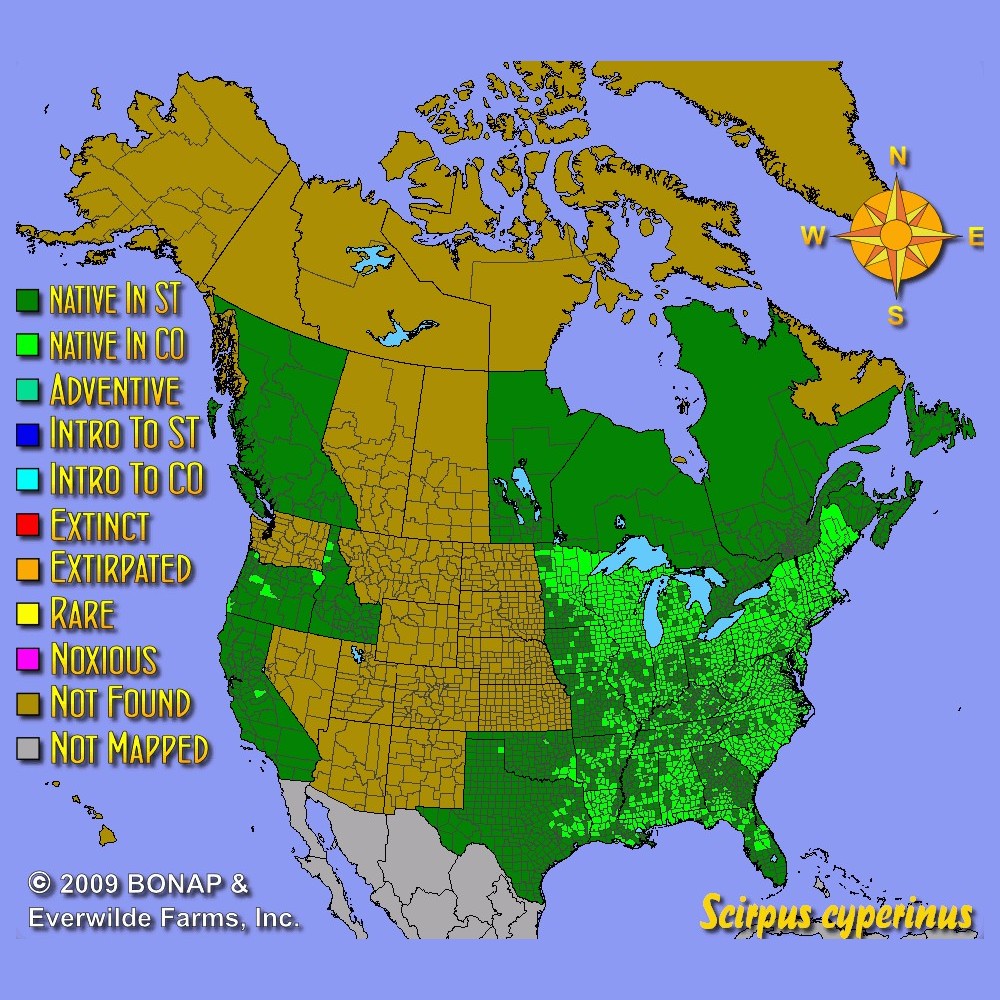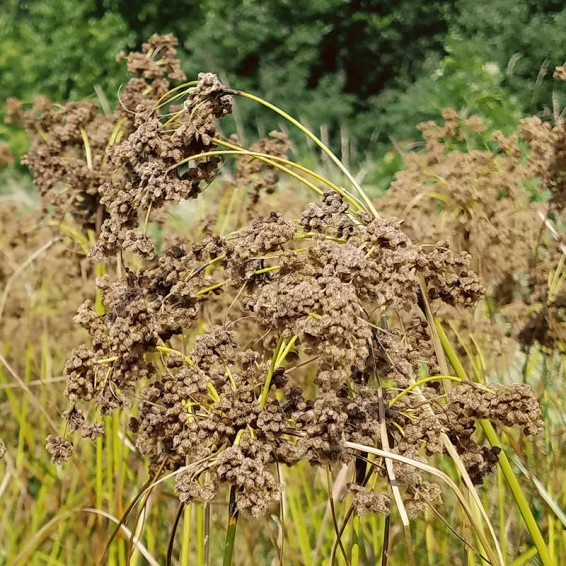Wool Grass Seeds
- HOW TO GROW
- FAST FACTS
- REVIEWS
HOW TO GROW
Sowing: Direct sow either in late fall or early spring. Press the wool grass seed into the surface of the soil, compacting the soil very firmly. For spring planting, mix the Scirpus Cyperinus seeds with moist sand and store them in the refrigerator for 60 days before planting. Keep the soil saturated until germination.
Growing: Water seedlings regularly until they become established. This plant prefers soil that is constantly moist and saturated, and thrives in shallow water or mud. It adapts to many soil types including clay, sand, and gravel with adequate moisture. It will eventually spread by rhizomes and self-seeding; mature plants can be divided. This wool grass plant makes an excellent choice for erosion control or wetland restoration, and provides forage and cover for birds and other wildlife. It also performs well in water gardens or on stream banks.
Seed Saving: At the end of the season, the seed heads will begin to ripen and turn from green to brown. Cut the mature seed heads from the stem and spread them out to dry. Rub them slightly to separate the seed from the plant material. Store the wool grass seed in a cool, dry place.
FAST FACTS
Common Names: Cottongrass Bulrush, Woolrush, Marsh Bulrush
Latin Name: Scirpus cyperinus
Species Origin: US Native Grass or Sedge
Type: Native Grasses, Cool Season
Life Cycle: Perennial
USDA Zones: 2, 3, 4, 5, 6, 7, 8, 9
US Regions: California, Mountain, Plains/Texas, Midwest, Northern, Northeast, Southeast
Seeds per Ounce: 1,700,000
Stratification: Cold/Wet for 8 Weeks
Germination Ease: Stratify 8 Weeks
Sunlight: Full Sun
Height: 60 Inches
Color: Green, Brown
Bloom Season: Blooms Late Summer, Blooms Early Fall, Blooms Late Fall
Quality!
Fun to grow! This grass is a delight to see in the cooler months of the year. The animals love it and planting specialty grasses are an important thing you can do to help the wildlife and environment.
DESCRIPTION

HOW TO GROW
Sowing: Direct sow either in late fall or early spring. Press the wool grass seed into the surface of the soil, compacting the soil very firmly. For spring planting, mix the Scirpus Cyperinus seeds with moist sand and store them in the refrigerator for 60 days before planting. Keep the soil saturated until germination.
Growing: Water seedlings regularly until they become established. This plant prefers soil that is constantly moist and saturated, and thrives in shallow water or mud. It adapts to many soil types including clay, sand, and gravel with adequate moisture. It will eventually spread by rhizomes and self-seeding; mature plants can be divided. This wool grass plant makes an excellent choice for erosion control or wetland restoration, and provides forage and cover for birds and other wildlife. It also performs well in water gardens or on stream banks.
Seed Saving: At the end of the season, the seed heads will begin to ripen and turn from green to brown. Cut the mature seed heads from the stem and spread them out to dry. Rub them slightly to separate the seed from the plant material. Store the wool grass seed in a cool, dry place.
FAST FACTS
Common Names: Cottongrass Bulrush, Woolrush, Marsh Bulrush
Latin Name: Scirpus cyperinus
Species Origin: US Native Grass or Sedge
Type: Native Grasses, Cool Season
Life Cycle: Perennial
USDA Zones: 2, 3, 4, 5, 6, 7, 8, 9
US Regions: California, Mountain, Plains/Texas, Midwest, Northern, Northeast, Southeast
Seeds per Ounce: 1,700,000
Stratification: Cold/Wet for 8 Weeks
Germination Ease: Stratify 8 Weeks
Sunlight: Full Sun
Height: 60 Inches
Color: Green, Brown
Bloom Season: Blooms Late Summer, Blooms Early Fall, Blooms Late Fall
Reviews
Review
Quality!
Fun to grow! This grass is a delight to see in the cooler months of the year. The animals love it and planting specialty grasses are an important thing you can do to help the wildlife and environment.



